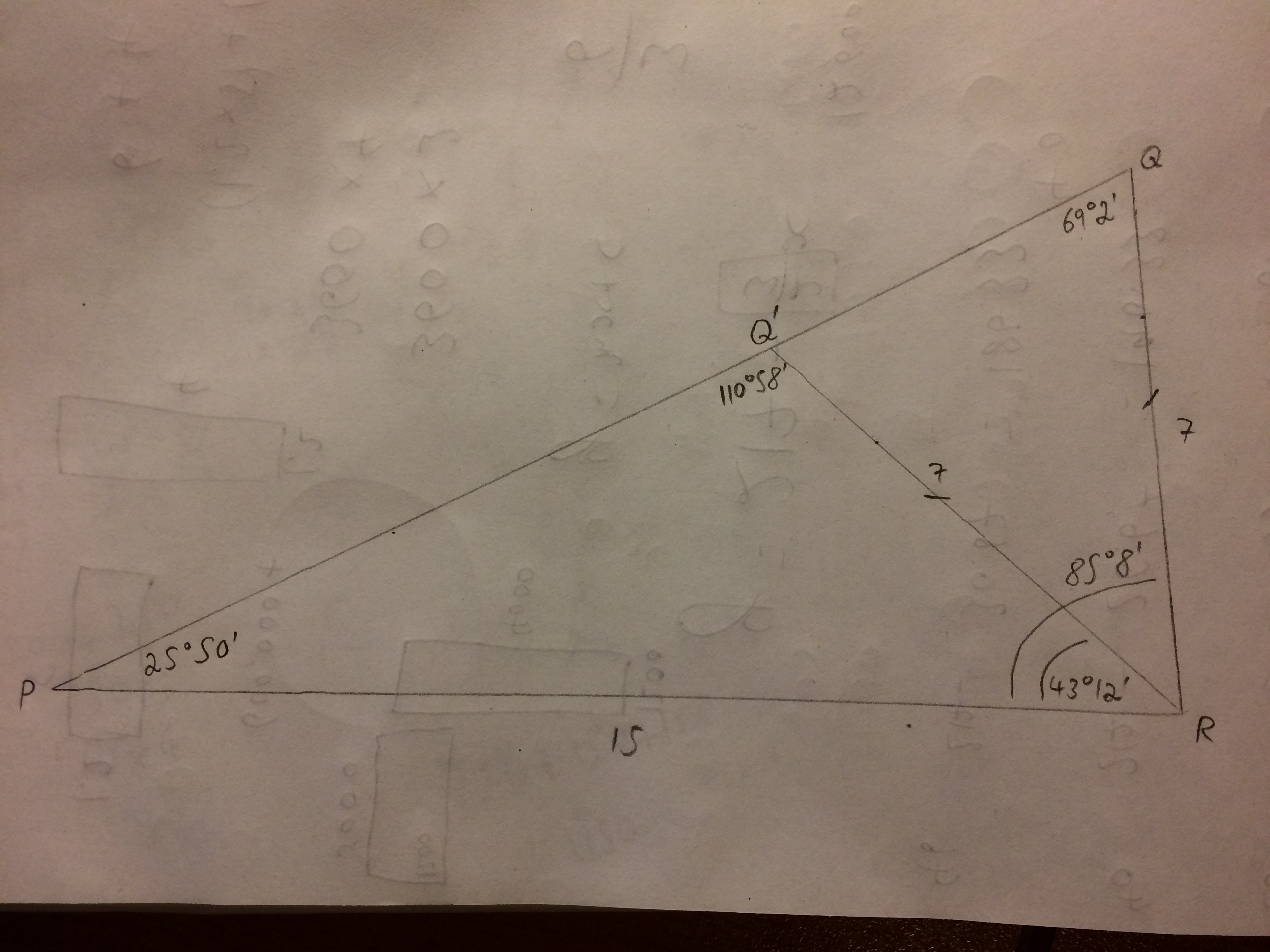Question #b9ee2
1 Answer
Explanation:
We can solve for the angle Q using the Law of Sines:
But because we have two side lengths and a non-included angle, there are two possible triangles we can draw:
 me
me
To find the second angle use this relationship for supplementary angles, which means two angles that add to 180˚:
So in our case
So another answer is
If you look at the picture you can see that both of these angles work. You have to be careful of this possibility when you have two side lengths and an angle that is not between them (a non-included angle). However, beware as there aren't always two answers in the special case because sometimes the three angles don't add up to 180˚.

